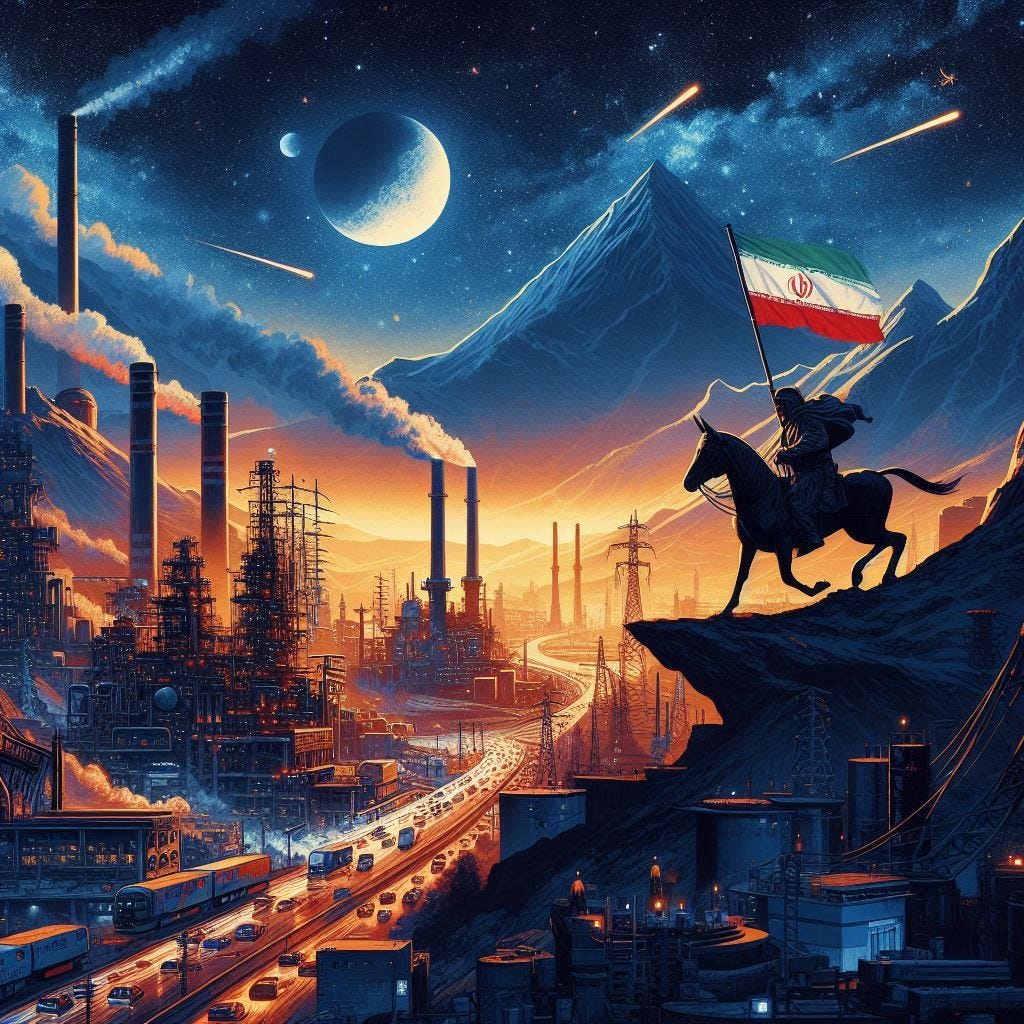Introduction: The Strategic Importance of U.S.-Iran Relations in Global Energy
The United States and Iran have long shared a strained relationship, punctuated by moments of intense hostility and uneasy diplomacy. With Iran situated in the heart of the Middle East—a region home to the world’s most abundant oil and gas reserves—the threat of a full-scale U.S. war with Iran sends immediate shockwaves through global energy markets. For the American oil and gas industry, the repercussions would be multifaceted, affecting prices, supply chains, infrastructure, investment, geopolitics, and the transition to cleaner energy sources.
This article explores in depth how such a conflict would impact the U.S. oil and gas sector—from upstream operations to consumer prices—through both immediate disruptions and long-term structural shifts.
Chapter 1: The Strategic Oil Chokepoint — Strait of Hormuz
The Strait of Hormuz is a 21-mile-wide passage that handles approximately 20% of the world’s petroleum, including exports from Saudi Arabia, Iraq, Kuwait, UAE, and Iran. In the event of war, Iran has repeatedly threatened to close or disrupt this chokepoint. Even though the U.S. has become less reliant on Middle Eastern oil due to its shale revolution, the global oil price is still influenced by international supply-demand dynamics. Any disruption in the Strait of Hormuz could cause a sharp increase in oil prices worldwide.
While American oil production is mostly domestic, its downstream processes such as refining and petrochemical production, and even pricing, are globally integrated. A war scenario would cause massive volatility in Brent and WTI prices. It would also result in a spike in insurance rates for oil tankers, trigger panic-driven speculative trading, and affect the availability of heavy crudes used by Gulf Coast refiners.
Chapter 2: Immediate Impacts on U.S. Oil Prices and Gasoline Costs
Wars create uncertainty, and markets detest uncertainty. The last significant military tension with Iran, such as the killing of General Qassem Soleimani in 2020, caused oil prices to rise sharply overnight. A full-blown war would likely push crude oil prices well above $100 to $150 per barrel in the short term. Gasoline prices could exceed $6 to $7 per gallon depending on the duration and intensity of the conflict. The situation could also lead to fuel rationing or the implementation of emergency energy measures at the state level.
A sustained spike in oil prices would ripple through the broader economy. Higher transportation and shipping costs would lead to increased prices for goods and services. This inflationary pressure could influence the Federal Reserve's interest rate policy, complicating economic recovery efforts.
Chapter 3: U.S. Energy Independence – Myth vs. Reality
Although America has become a net exporter of petroleum in recent years, it still imports specific grades of oil and relies on global benchmarks like Brent for pricing. The narrative of U.S. energy independence is more nuanced than it appears. American refiners still import heavy crude that domestic sources do not provide in sufficient quantities. Gasoline is priced globally, and global turmoil affects domestic sentiment and market behavior.
The Strategic Petroleum Reserve (SPR) holds around 350 to 400 million barrels of oil. In a prolonged conflict, the government may draw from it to stabilize prices. However, SPR withdrawals are temporary measures, and the physical logistics of release versus consumption are complex. Global traders may interpret SPR use as a desperation move, potentially worsening market volatility.
Chapter 4: Supply Chain and Infrastructure Vulnerabilities
Iran has demonstrated cyber capabilities that have previously targeted U.S. infrastructure. In a war scenario, the oil and gas industry would likely become a prime target for such cyberattacks. Pipeline control systems, such as those seen in the Colonial Pipeline incident, refineries, LNG terminals, and data centers connected to the grid interface could all be at risk.
Iran could also physically attack American oil infrastructure abroad, particularly in countries like Iraq or the UAE. Such actions could include drone or missile attacks on production sites, disruption of joint ventures with global oil majors, and targeting of U.S.-flagged tankers. These disruptions would further compound market instability.
Chapter 5: Domestic Oil Production Challenges and Opportunities
Higher oil prices typically benefit U.S. producers, especially shale companies. A war would likely trigger increased drilling and production activity, a spike in share prices of oil and gas firms, and a rise in job creation in oil-producing states such as Texas, North Dakota, and New Mexico.
However, expanding production is not seamless. The industry would likely face equipment shortages, including rigs, pipes, and sand, along with labor constraints. Permitting delays and environmental opposition could also impede growth.
Too much price fluctuation can negatively impact the planning cycles of oil companies, particularly for smaller producers with narrow margins, firms with high debt levels, and midstream companies that rely on steady throughput to maintain profitability.
Chapter 6: The LNG Market and Global Natural Gas Implications
The United States is the world’s top exporter of LNG. A war would likely increase global demand for LNG as Europe seeks alternatives to pipeline gas and shifts toward seaborne supply. This could create infrastructure bottlenecks at U.S. Gulf Coast terminals and drive up domestic natural gas prices, especially during the winter months.
Iran, which holds the world’s second-largest gas reserves, currently plays a minimal role in global gas markets due to sanctions. A war would likely delay Iran's potential reintegration into global energy markets for decades, further tightening global supply.
Chapter 7: Environmental and Regulatory Ramifications
In a war-induced energy emergency, the U.S. may temporarily ease environmental restrictions on drilling and refining. This could also lead to delays in clean energy and emissions regulations and a possible expansion of offshore and federal land leases for hydrocarbon extraction.
The Biden administration’s clean energy targets could face political backlash if a war-driven oil crisis forces a renewed reliance on fossil fuels. This might result in the reopening of dormant coal and oil power plants, a slowdown in electric vehicle adoption due to higher battery costs, and a general reprioritization of energy security over climate objectives.
Chapter 8: Impact on Energy Investment and Financial Markets
A war would significantly alter investor behavior. Investors might shift toward safer assets such as gold, bonds, and oil, leading to increased valuation of oil majors and defense contractors. At the same time, renewable energy stocks could decline as national budgets are reprioritized.
Sovereign wealth funds, pension funds, and hedge funds would likely reallocate capital toward fossil fuel-related assets. They might invest more in energy infrastructure security, including both cyber and physical protections, and reduce their exposure to emerging markets located near the conflict zone.
Chapter 9: Strategic Realignment of U.S. Energy Policy
Following a conflict, the United States would likely prioritize rebuilding its strategic reserves, incentivizing domestic energy storage and refining capacity, and securing strategic minerals and battery components essential for energy security.
New federal policies could include tax breaks for domestic producers, fast-tracked permitting processes under national security exceptions, and increased Department of Energy funding for fossil fuel research and development.
Chapter 10: The Geopolitical Domino Effect on OPEC, Russia, and China
Iran is a key member of OPEC. A war could destabilize OPEC cohesion, empower countries like Saudi Arabia and the UAE diplomatically, and cause internal friction among oil-producing nations regarding production quotas.
Russia might benefit from the situation, as increased oil and gas demand from Europe and Asia could help it offset the impact of existing sanctions. Russia would also gain the ability to exert more pressure on energy-poor European countries.
China would likely pursue energy diversification strategies, seeking alternative suppliers in Africa, Venezuela, and Russia. At the same time, China might accelerate its investments in green energy and electric vehicles while engaging in diplomacy with Gulf states to protect its energy imports.
Chapter 11: Long-Term Shifts in Global Energy Landscape
The conflict would likely lead to the development of new pipelines, LNG terminals, and strategic corridors designed to bypass Iran. Projects connecting Africa to Europe, U.S. energy partnerships with India, and Central Asian oil routes could gain prominence.
Paradoxically, the war could also accelerate the global energy transition. Governments might increase support for renewable energy sources such as solar, wind, and hydrogen. Decentralized microgrids could become more popular to reduce geopolitical risks, and innovations in battery storage and energy efficiency could receive greater funding and attention.
Chapter 12: Preparedness and Risk Mitigation for U.S. Energy Firms
Energy firms must develop detailed war-contingency plans that include building supply chain redundancies, enhancing cybersecurity firewalls, and acquiring insurance hedges against operational shutdowns.
Companies offering a diversified energy portfolio that includes oil, gas, and renewables are likely to manage volatility more effectively. These firms may also attract long-term investors focused on environmental, social, and governance (ESG) factors and position themselves as future-ready enterprises.
Conclusion: A War of Energy Consequences
A U.S. war with Iran would be catastrophic not just for the region but for the delicate balance of the global energy economy. For the American oil and gas industry, the impacts would include price surges, cybersecurity threats, infrastructural challenges, and dramatic shifts in policy. In the short term, the industry might benefit from higher prices and increased domestic investment. However, long-term uncertainty, inflation, and global market disruption could severely impact both producers and consumers.
As the world edges closer to energy interdependence, conflicts like this underline the need for strategic planning, geopolitical awareness, and resilient infrastructure in America's oil and gas industry.















Share this post